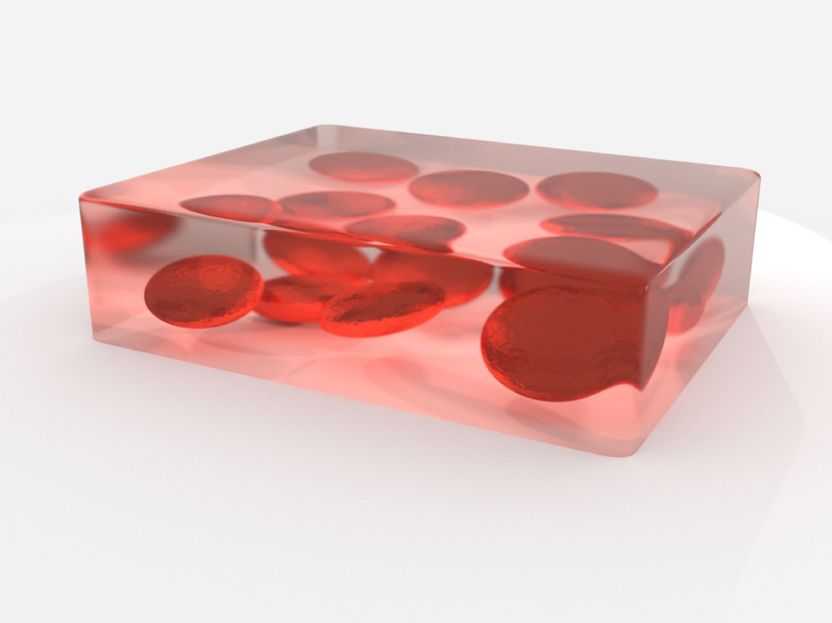Move to the red!
Design and synthesis of rigid fluorophores
Stable dyes with sharp absorption and fluorescence emission bands in the red or NIR region of the spectrum, combined with high molar absorption coefficients and high fluorescence quantum yields, may find extensive use in many different fields, such as optical engineering, analytical chemistry, biological in vivo imaging and sensing applications, and materials science. In Chemistry—An Asian Journal, Wim Dehaen and co-workers, based at Katholieke Universiteit Leuven (Belgium), Lanzhou University (China), and the Université de Mons (Belgium) describe the preparation of difluoroboron dipyrromethene (BODIPY)-based dyes with increasing conformational rigidity that have absorption in the visible region of the spectrum.
Although a substantial number of BODIPY dye analogues have been developed, primarily through extended conjugation using aryl substituents, the substituted BODIPY dyes show red shifts of over 100 nm but have only low to moderate fluorescence quantum yields owing to non-radiative decay arising from the non-rigid nature of compounds. Alkenyl, and more-recently alkynyl substituents afforded large red shifts, but the rigidity of the triple bond generally results in higher quantum yields. Functionalization of the aromatic rings attached to the BODIPY core with heterocyclic rings even led to near infrared (NIR) emission; however, these dyes require lengthy multi-step syntheses of the fused-ring pyrrole starting materials and are restricted in scope to symmetrical frameworks.
Two BODIPY dyes were synthesized from a conformationally unconstrained indacene using simple palladium catalysis. These dyes showed restricted rotation of their phenoxy moieties, and thus absorb and fluoresce more intensely at longer wavelengths relative to their unrestricted analogues. Furthermore, reduction of the conformational flexibility in these dyes led to significantly higher fluorescence quantum yields. Quantum chemical calculations were also performed which showed that the increase in conformational constraint led to larger spectroscopic shifts. X-ray diffraction analysis showed a progressive increase in the extended planarity of the chromophore in line with increasing conformational rigidity, which explained the larger red shifts in the absorption and emission spectra.
This practically simple design strategy provides promise for the rapid development of new BODIPY-based dyes with increasing structural rigidity. Furthermore, the development of novel dyes with extended planarity is expected to afford higher quantum yields and more-substantial bathochromic shifts into the NIR region, which may find interesting application in a wide variety of fields.
Original publication: Wim Dehaen et al.; "Synthesis, Spectroscopy, Crystal Structure Determination, and Quantum Chemical Calculations of BODIPY Dyes with Increasing Conformational Restriction and Concomitant Red-Shifted Visible Absorption and Fluorescence Spectra"; Chemistry - An Asian Journal 2010, 5, No. 9, 2016–2026.
Topics
Organizations
Other news from the department science

Get the chemical industry in your inbox
By submitting this form you agree that LUMITOS AG will send you the newsletter(s) selected above by email. Your data will not be passed on to third parties. Your data will be stored and processed in accordance with our data protection regulations. LUMITOS may contact you by email for the purpose of advertising or market and opinion surveys. You can revoke your consent at any time without giving reasons to LUMITOS AG, Ernst-Augustin-Str. 2, 12489 Berlin, Germany or by e-mail at revoke@lumitos.com with effect for the future. In addition, each email contains a link to unsubscribe from the corresponding newsletter.
Most read news
More news from our other portals
See the theme worlds for related content
Topic World Spectroscopy
Investigation with spectroscopy gives us unique insights into the composition and structure of materials. From UV-Vis spectroscopy to infrared and Raman spectroscopy to fluorescence and atomic absorption spectroscopy, spectroscopy offers us a wide range of analytical techniques to precisely characterize substances. Immerse yourself in the fascinating world of spectroscopy!

Topic World Spectroscopy
Investigation with spectroscopy gives us unique insights into the composition and structure of materials. From UV-Vis spectroscopy to infrared and Raman spectroscopy to fluorescence and atomic absorption spectroscopy, spectroscopy offers us a wide range of analytical techniques to precisely characterize substances. Immerse yourself in the fascinating world of spectroscopy!
Topic world Synthesis
Chemical synthesis is at the heart of modern chemistry and enables the targeted production of molecules with specific properties. By combining starting materials in defined reaction conditions, chemists can create a wide range of compounds, from simple molecules to complex active ingredients.

Topic world Synthesis
Chemical synthesis is at the heart of modern chemistry and enables the targeted production of molecules with specific properties. By combining starting materials in defined reaction conditions, chemists can create a wide range of compounds, from simple molecules to complex active ingredients.
Last viewed contents
Pharmacy

Green hydrogen: A cage structured material transforms into a performant catalyst - Very interesting class of materials for electrocatalysts discovered?

Watching lithium in real time could improve performance of EV battery materials - Researchers tracked the movement of lithium ions inside a promising new battery material

Spray drying the precision particle under the virtual magnifying glass
REACH is the dominant driver for substitution - more action is needed
Category:Materials_science_institutes

Single nanoparticle mapping paves the way for better nanotechnology

Electrons use the zebra crossing - Exotic Patterns of interacting electrons at the metal-insulator transition

GaN-on-Silicon for scalable high electron mobility transistors
Open_hearth_furnace




























































